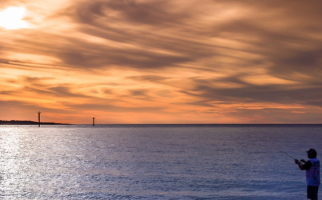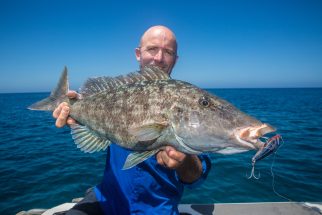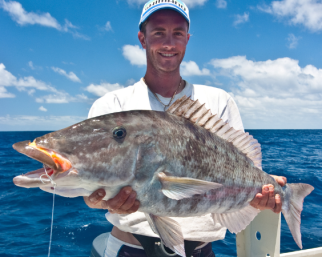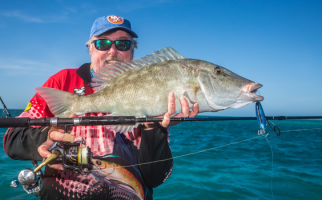Thanks to an innovative jetty design, Port Hedland’s new land-based fishing platform will adapt perfectly to the ever-changing conditions, so land-based fishers won’t have to!
What’s more, the Pilbara Ports Authority (PPA) has safely deployed six mangrove jack, cod and coral trout-attracting reef balls, donated by Rio Tinto, under the smart-design jetty to further enhance fishing opportunities.
PPA placed fishing considerations at the fore of its ongoing construction of the Spoilbank Marina, with better flexibility to fish during Port Hedland’s large tidal swings implemented into the jetty’s design and build.
Given the difference between the low and high tide mark in Port Hedland is frequently around six metres, PPA constructed two levels on the platform that allows fishers the freedom to wet a line either during the low or high tide mark, with wheelchair accessibility included.
Drawing on our artificial reef expertise, Recfishwest assisted PPA in the configuration of the six reef balls, providing tips on how to maximise the effectiveness of the reef modules.
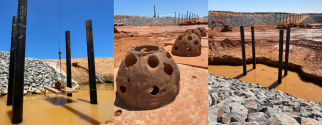
The pylons of the jetty themselves will help provide shelter and structure for the settlement of marine flora, algae, crustaceans and bait fish, further encouraging multiple species that fishers love to target to congregate and move between the pylons and individual reef structures.
We have also advised PPA on deploying additional reef ball modules and other reef structures around the marina parallel to the breakwall on the inside of the marina.
By providing other areas of habitat enhancement within the marina, this will help reduce overcrowding on the fishing jetty upon its completion, while also increasing catches of sought-after species.
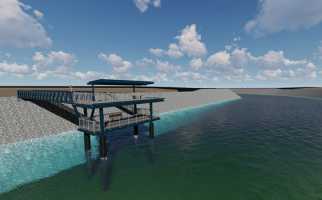
Recfishwest CEO Dr Andrew Rowland said, “It’s great to see that the Pilbara Ports Authority have taken the interests of recreational fishers to heart in designing this marina and fishing platform – we’d like to see other Ports Authorities’ follow this example providing better access for land-based fishers.”
“Not only does the design take advantage of the fluctuating tides in this region, but the modules positioned in the marina will eventually house a wide range of species the community loves to catch.”
It’s good news for Port Hedland’s boat fishers too in the $187.5 million construction of the Spoilbank Marina project, funded by the State Government, Town of Port Hedland and BHP.
“Once complete, the marina will feature a four-lane boat ramp, 22 boat pens, fish cleaning stations and barbecue facilities,” said Pilbara Ports Authority General Manager Engineering and Infrastructure, Charles Kretzmann.
“The Spoilbank Marina will improve safe access to deep water by providing a separate entrance channel for recreational boaters and fishers to use away from large commercial bulk carriers navigating in and out of the port,” added Charles.
Recfishwest will continue to consult with PPA on the ongoing Spoilbank Marina construction, which is expected to be operational by late 2023, with landside completion expected in early 2024.
If you wish to keep up to date on the Spoilbank Marina project, check out the Spoilbank Marina Facebook Page.
